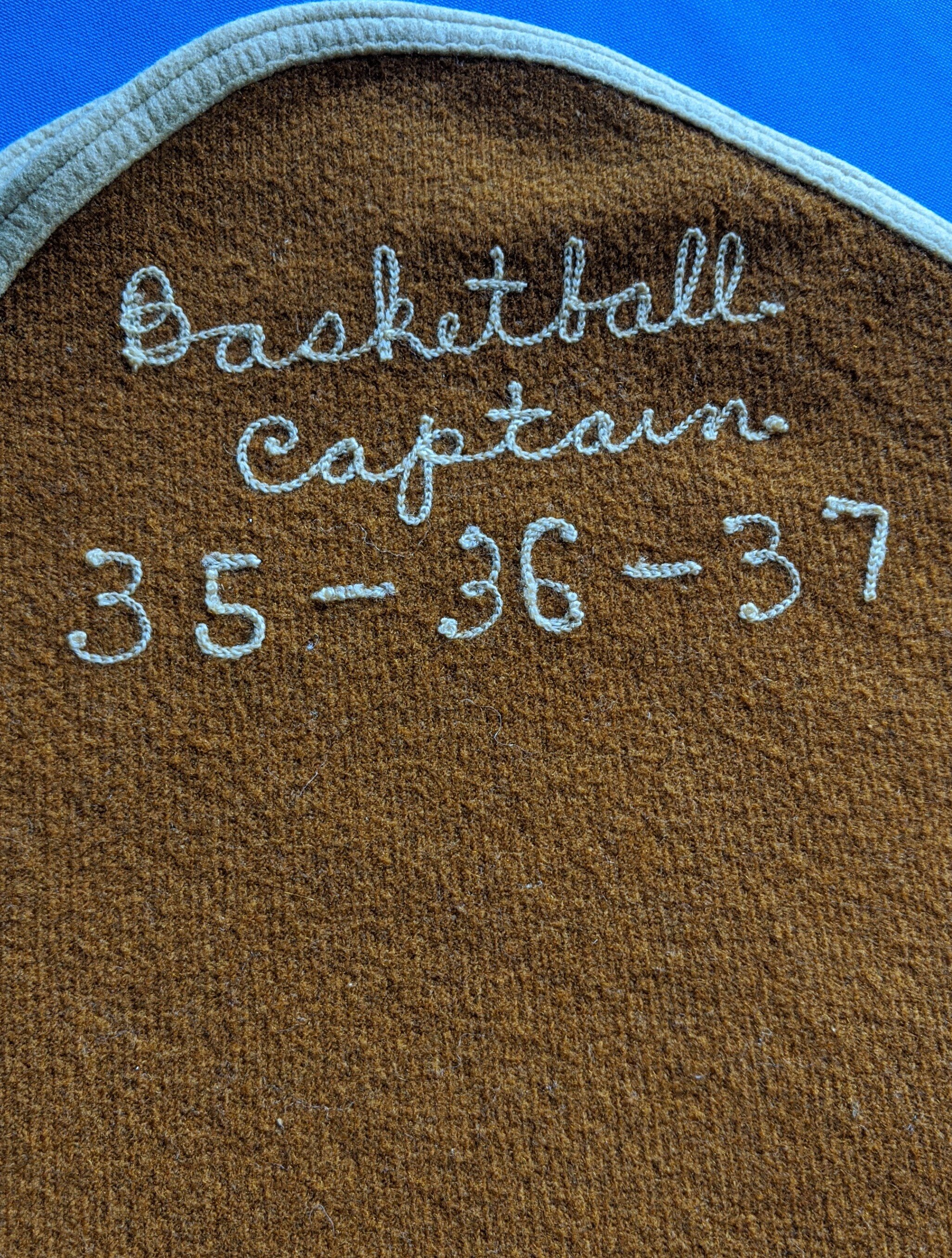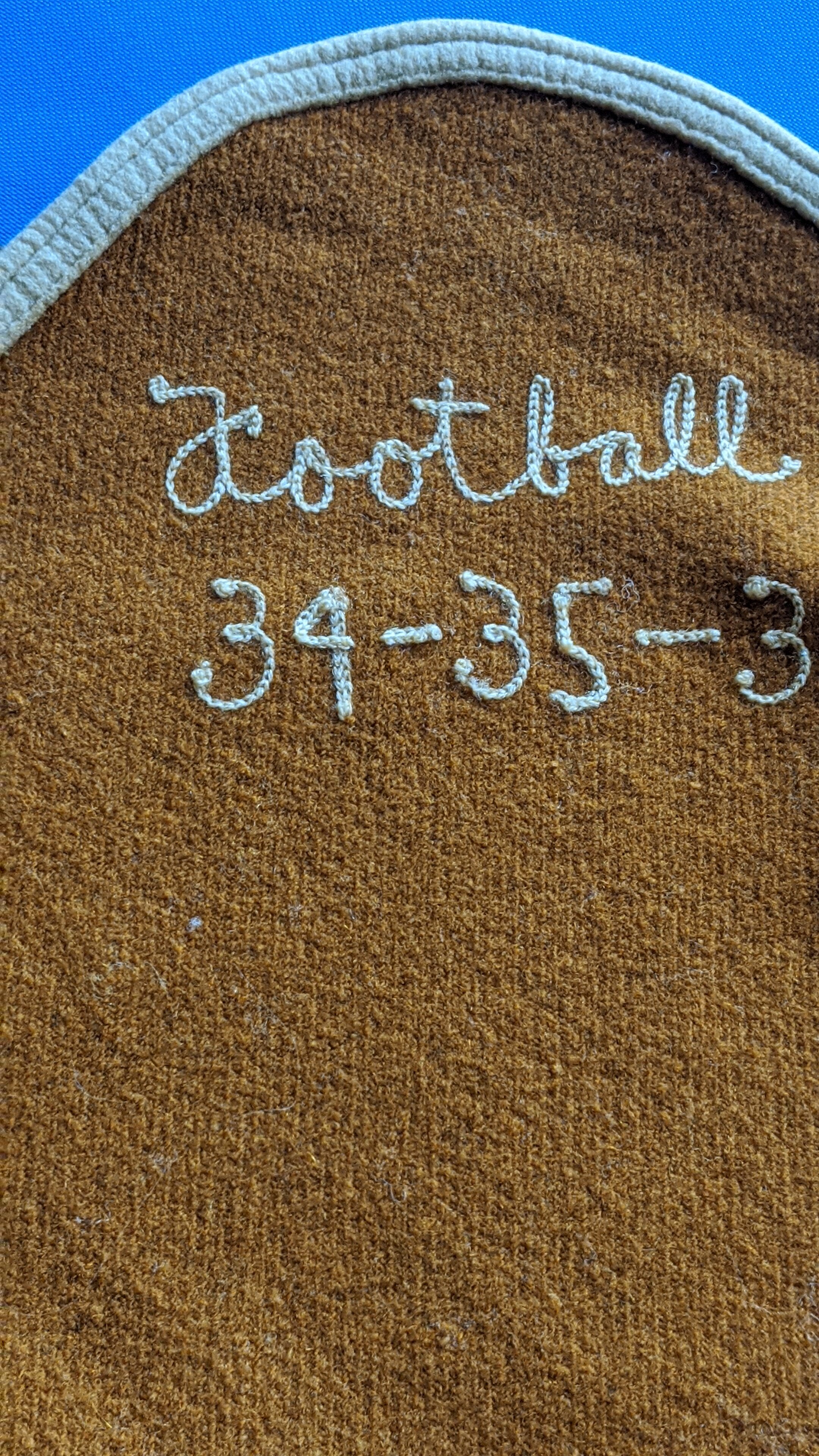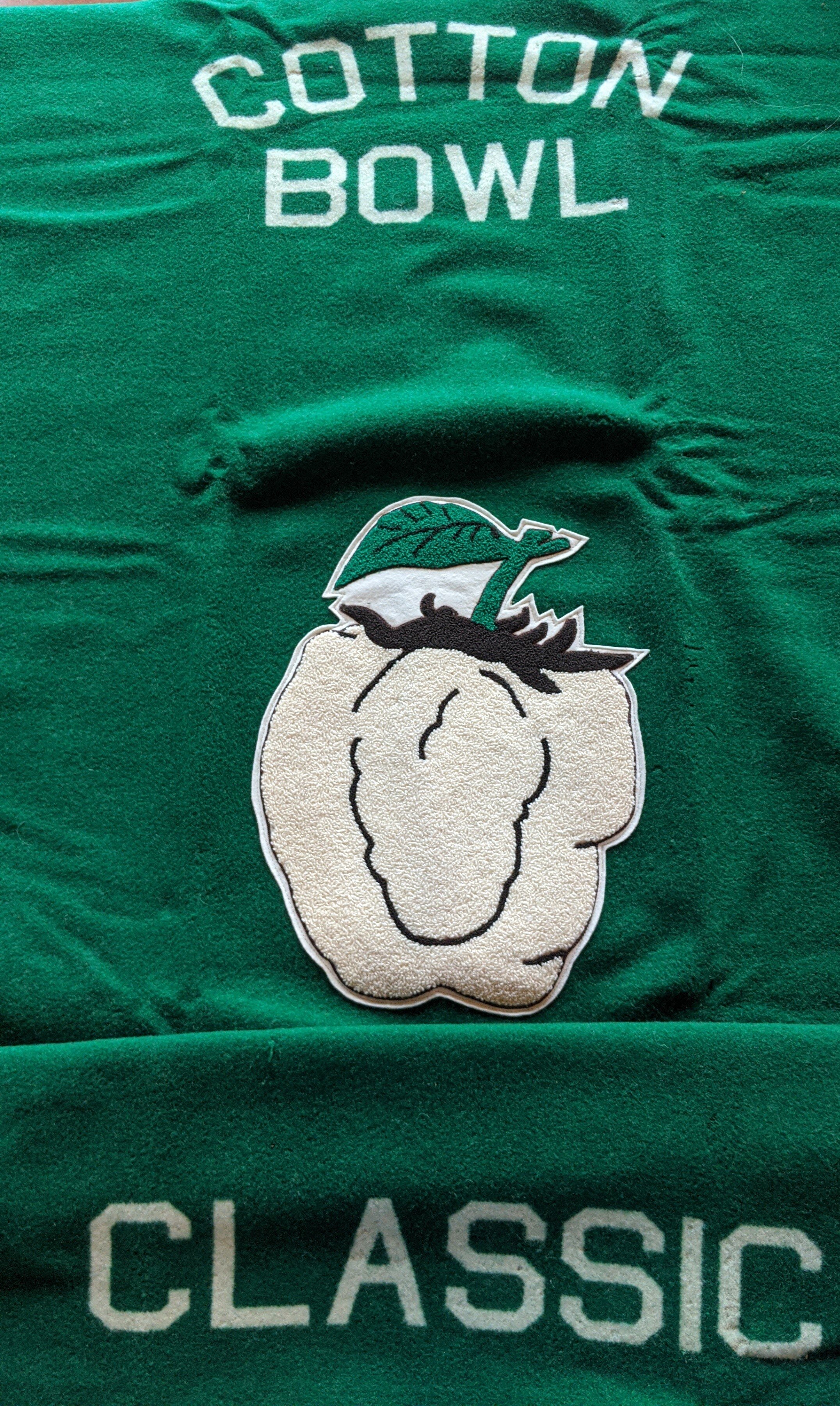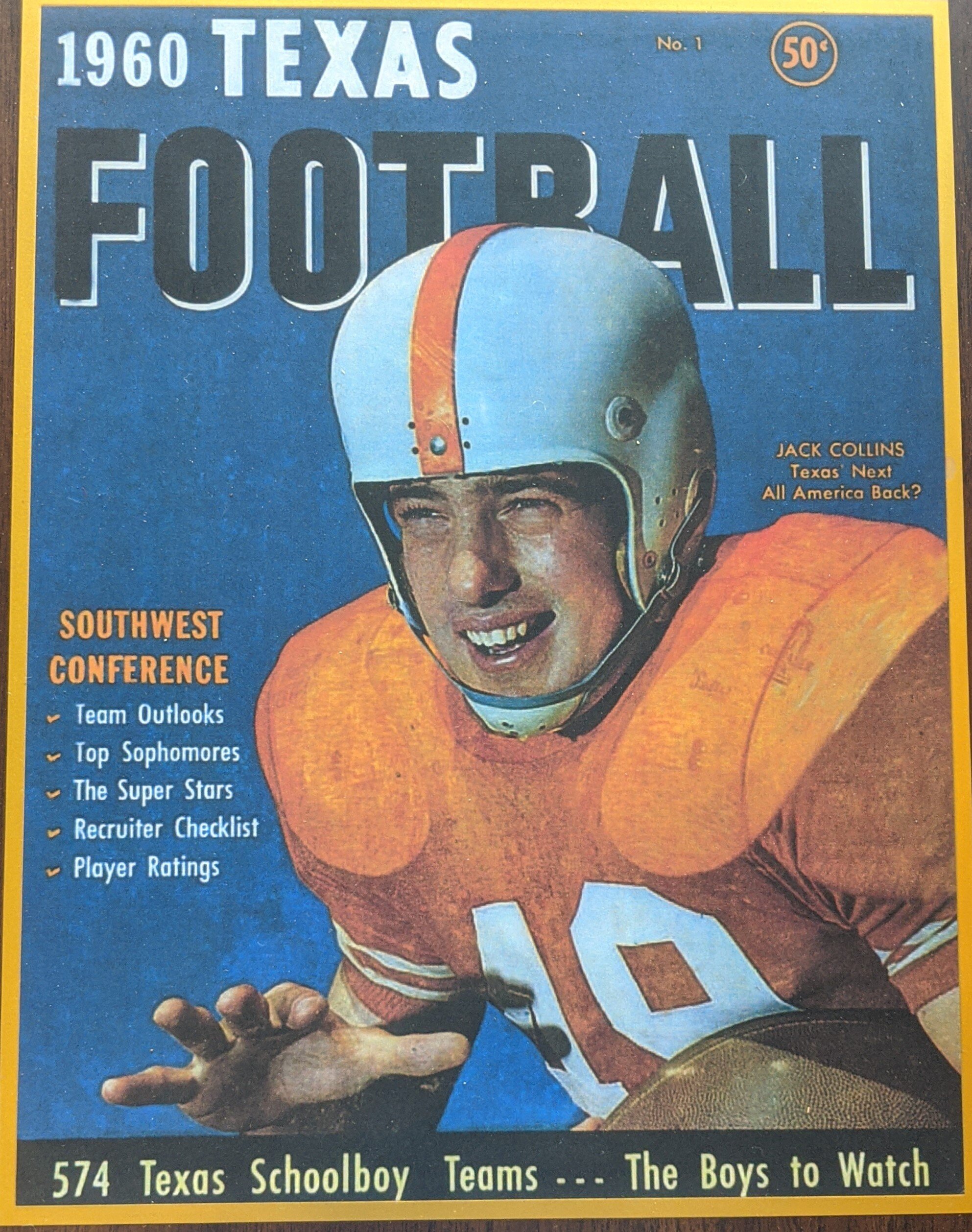THREE GENERATIONS OF COLLINS UT LETTERMEN
It is a goal of TLSN to remember the family tree of former Longhorns who have created Longhorn sports history.
Author Mark McDonald shares the Mauldin clan's family tree at https://texas-lsn.squarespace.com/the-mauldins-by-mark-mcdonald, and Billy Dale shares the impressive story of Stewart Keller’s family trees impact on UT sports history at https://texas-lsn.squarespace.com/stewart-kellers-longhorn-roots-start-in-1899-orns-sitennis-football-diving.
Jack Collins Sr. 1934-36
Jack Collin’s family tree is the newest permanent addition to the TLSN website.
The top four photos shown below are Jack’s “T” blankets. Jack Senior received one for football and one for basketball. Jack Sr.’s 1937 blankets are “Texas Orange” (burnt orange) color. On the corners of the blankets honors received are monogrammed.
The last two images are Jack Juniors “T” blanket with Jack’s monogrammed accomplishments in the center of the blanket. Note the color difference between the two blankets.
DKR, in the early 1960s, decided to reinstate the “Texas Orange” color used by Clyde Littlefield before WWII. There was an epic, somber, and serious conflict pitting two-color factions. The bright orange (traditionalist) and the Burnt orange contingent battled for the Texas Longhorns' color soul. With no resolution in sight, a color committee was formed.
Even Chairman Frank Erwin got involved in the “true” Longhorn color. He said, “I suggest that we adopt the standard orange that’s the color on the arch at the student union. It is not light orange; it’s burnt orange or dark orange. I know because I went by yesterday to see it,”
For more information on the color struggle click on https://texas-lsn.squarespace.com/the-long-road-to-a-team-color .
PANTONE 159
The traditionalists lost the battle, and burnt orange enthusiasts ruled the Longhorn nation. Burnt orange became the "Texas-y" color and legally protected by the U.T. Brand, Trademarks, and Licensing office.
Compare Jack Collin’s father’s burnt orange 1937 sweater to Jack Collin’s bright orange 1960 jersey in the photos below, and then compare to Scott Appleton’s letter jacket in 1963.
Jack Collins Jr. 1958-61
High School
One of Jack’s fondest memories of football occurred during his senior year at Highland Park High School during a playoff game against the Abilene Eagles. Abilene entered the game with three straight State Championships and a 49-straight winning streak. Jack caught a 58-yard touchdown pass tied the game against Abilene, and Highland Park won based on penetrations. The next week the Scots defeated Port Arthur 21-9, as Collins rushed for 114 yards.
College
In 1959 Collins earned All-Southwest Conference honors as a sophomore at The University of Texas, leading the Longhorns in rushing, receiving, and total offense. That year the team had a 9-1 record and went to the Cotton Bowl but lost to Syracuse. In 1960 Jack was injured and struggled all year to return to the standards he set in 1959. In 1961 he returned to the team as a starter in the new wing-T formation. He was used primarily as a wide receiver and a lead blocker for James Saxton on the power sweep. In his final game, Collins caught a 24-yard pass for a winning touchdown that defeated Mississippi.
1960 Jack Collins intercepts a Texas Tech pass
Professional Football
Following his playing days as a Longhorn, Jack continued his football career at the professional level. He was drafted by the Pittsburgh Steelers and participated in the 1962 preseason training camp. He was cut from the team and picked up by the Dallas Cowboys. He spent the 1962 season with the Cowboys as a member of the taxi squad. After the ’62 season, he returned to Austin to complete his degree in the spring of 1963.
Although somewhat dubious about continuing his football career, Jack decided to give it one more shot and returned to the Cowboys summer training camp in Thousand Oaks, California. After a disastrous pre-season Cowboy game in which he did not get a chance to play, Collins discussed his plans to leave the Cowboys with Head Coach Tom Landry. Landry encouraged him to hang on for a while longer, saying that he would help Collins find a spot on another team if it didn't work out with the Cowboys.
After much soul-searching, Jack decided it was time for him to pursue another career, although he left professional football after two years with some regret.
Banking Career
In January 1964, Jack began his career in banking and entered the Republic National Bank of Dallas's training program. Over the next 46 years, Jack rose through the ranks in commercial banking and served in several executive positions.
Jack says about Trainer Frank Medina
“The Longhorns trainer must have been one of the earliest proponents of affirmative action. Median was an equal opportunity guy. He treated everybody like crap.” “One week -the week of the OU game - I cut a class.” “I remember having to run stadium steps with Frank Medina at 6 in the morning. I mean , I don’t care if you were a starter or what. You didn’t get by with that.”
CARLETON BURKE COLLINS 1988-1992
Grandson of Jack Collins Sr., and son of Jack Collins Jr., Burke Collins played and lettered for the Longhorns in the early 1990s, but injuries plagued his college career. Because of these injuries, Burke spent time in rehabilitation under the care of Dr. Charles Craven. Inspired by Dr. Craven, Burke graduated from UT in 1992 with a Bachelor’s Degree in Kinesiology. In 1995 he received his Master’s Degree in Exercise Physiology from The University of Florida at Gainesville, while doing some work with the Gators’ championship football team. In 1997 Burke opened his business of Back to Work Physical Therapy in Tampa, Florida, and as of 2020 he owns and operates four clinics in the Tampa area. Though he now lives in Florida, he continues to follow UT closely and is a loyal Longhorn.
Burke is a T-ring recipient lettering in 1991 and graduating in 1992.
For those who look there are silver linings in adversity, and Burke's eyes were wide open. Because he spent so much time in rehab under the care of Dr. Charles Craven, Burke developed an interest in physical rehabilitation and prevention.



























